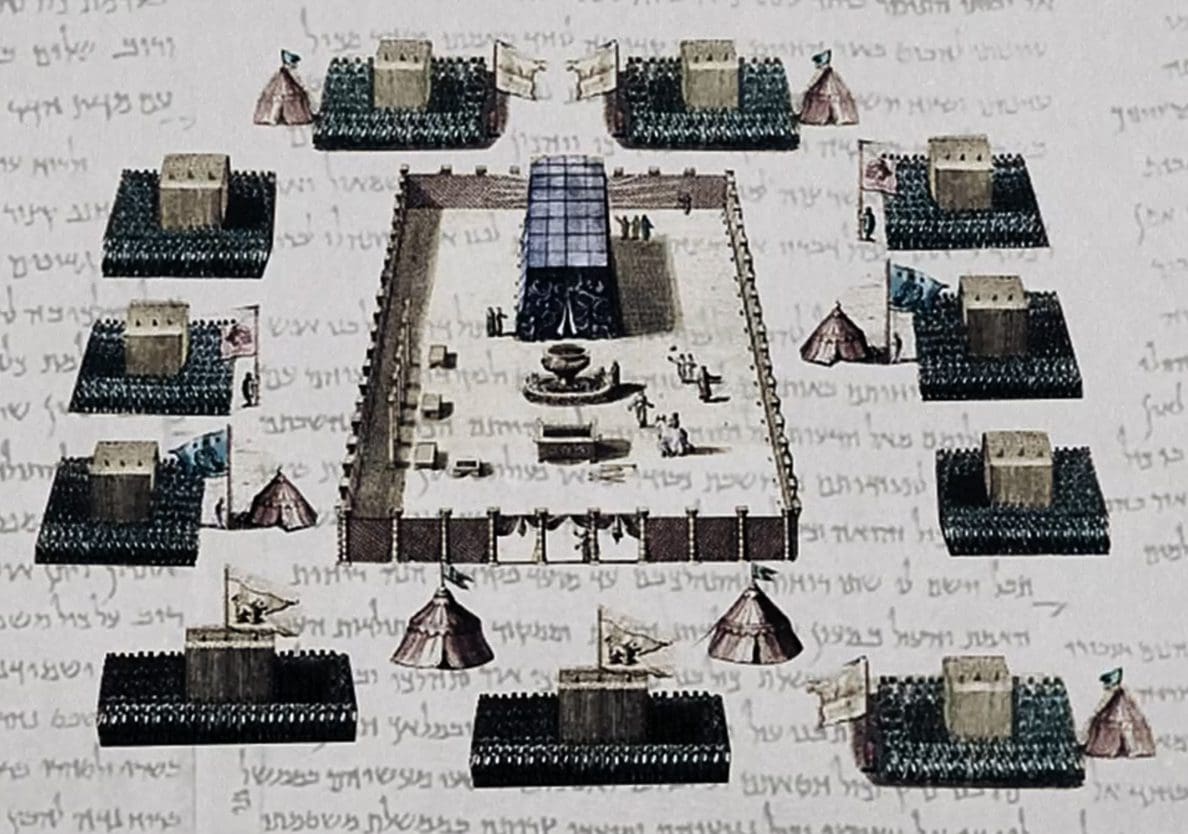The Bible meticulously describes the construction and layout of the Israelite’s Tent Tabernacle twice in Exodus (Exodus 25-27, 35-38). It was to be a place of worship for the temporarily nomadic Israelites, a place where God would dwell with them, his presence and thus authority would be near (Exodus 25:8). Later in Numbers 2, the Bible explains that Israel was required to camp in a certain way around the Tabernacle: Their camp was arranged tribally, in a rectangular fashion and oriented East to West.
While the average Bible reader may struggle with the monotony of the descriptions, these details have not only helped to explain the theological underpinnings of Israel but have also redeemed the Tent Tabernacle from skeptical scholarship of the 19th century (Julius Wellhausen, 1844–1918) that believed it to be imagined by a post-exile priest—in reality just a derivative of Solomon’s Temple, to retroactively explain the worship system of Israel and justify the importance of an Israelite priesthood.
“An amazing parallel to the Tabernacle of God can be seen in the war camp of Rameses the Great at the battle of Kadesh.”
But this theory has serious flaws: The Tabernacle is only superficially related to the Temple and does not appear to be a derivative. And the Tabernacle and its camp are very closely related to religious and military tents from the 3rd and 2nd millennia BC—a priest inventing the account in the Persian period (after 539 BC) would have reflected religious structures from their time. So, what tent structures closely resemble the Israelite Tabernacle?
The research of several scholars (Frank Moore Cross, James K. Hoffmeier, Michael M. Homan, Kenneth A. Kitchen) has been instrumental in revealing the very ancient comparatives to the Tent Tabernacle that bring us decisively to Egypt. Portable tents are known to have been used for religious and secular purposes as early as Egypt’s first dynasty (c. 2900 BC). They served as places to conduct religious ceremonies associated with mummification and burial (the “tents of purification”) as demonstrated in numerous illustrations and tomb paintings (mid-3rd millennium BC)[1] and as evidenced by fragments of remaining poles and frames.
The secular use of portable tent structures at this time were mainly for outdoor lounging and meeting spaces for the wealthy—attested to by the gold covered wooden rods and joints to a queen’s pavilion discovered in her tomb (Queen Hetepheres I, 2900 BC).


Closer to the time of the Biblical Tabernacle (and Exodus) is the New Kingdom of Egypt (1550-1070 BC), when the use of tent structures had proven valuable in warfare. An amazing parallel to the Tabernacle of God can be seen in the war camp of Rameses the Great (Rameses II, 13th Century BC) at the battle of Kadesh.
Surviving illustrations show a rectangular camp, oriented east to west, with King Rameses’ tent near the centre. The tent is divided into two spaces, a reception area and then a throne room—remarkably similar to the layout of the Tabernacle with its reception area and the holy of holies that housed the ark with its mercy seat.
Amazingly, the last known examples of Egyptian tents in this form and used for this purpose come from the 12th century BC, the Biblical time of the Judges. The author of the Tabernacle accounts accurately describes a tent and camp of Israel that fits into a very ancient, Egyptian context. Moreover, the Bible describes that Israel left Egypt prepared for war, is it any wonder, then, that they would be arranged in a way that was familiar to them while installing God as their king and fierce leader.

Corie Bobechko is a daily co-host, speaker, and writer of Bible Discovery. She also hosts a YouTube channel that shows how history and archaeology prove the Bible. Her heart for seekers and skeptics has led her to seek truth and share it with others. Corie also has a Bachelor of Theology from Canada Christian College.
[1] Kitchen, Kenneth A. “The Desert Tabernacle,” Bible Review 16.6 (2000): 14–21.
https://www.baslibrary.org/bible-review/16/6/7
• Homan, Michael M. “The Divine Warrior in His Tent,” Bible Review 16.6 (2000): 22–24, 26, 28, 30–31, 33, 55.
https://www.baslibrary.org/bible-review/16/6/8
• Frank Moore Cross Jr., “The Priestly Tabernacle in the Light of Recent Research”
https://rsc.byu.edu/temple-antiquity/priestly-tabernacle-light-recent-research






